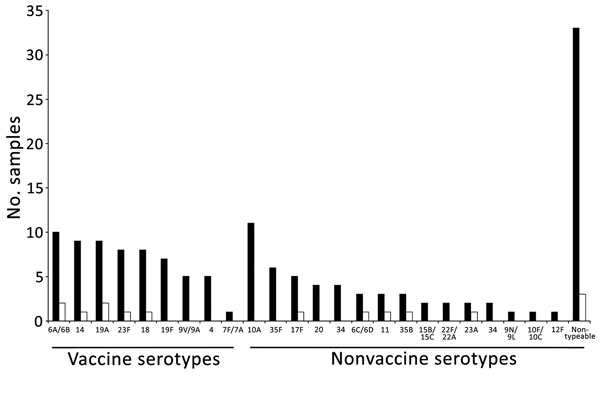Volume 23, Number 8—August 2017
Dispatch
Risk for Death among Children with Pneumonia, Afghanistan
Figure 2

Figure 2. Number of nasopharyngeal samples and pneumococcal serotype/serogroup distribution (including minor serotypes in multiple serotypes) among 110 discharged (black bars) and 11 deceased (white bars) children with pneumonia admitted to Abu Ali Sina Balkhi Regional Hospital, Mazar-e-Sharif, Afghanistan, December 2012–March 2013.
1These authors contributed equally to this article.
Page created: July 17, 2017
Page updated: July 17, 2017
Page reviewed: July 17, 2017
The conclusions, findings, and opinions expressed by authors contributing to this journal do not necessarily reflect the official position of the U.S. Department of Health and Human Services, the Public Health Service, the Centers for Disease Control and Prevention, or the authors' affiliated institutions. Use of trade names is for identification only and does not imply endorsement by any of the groups named above.